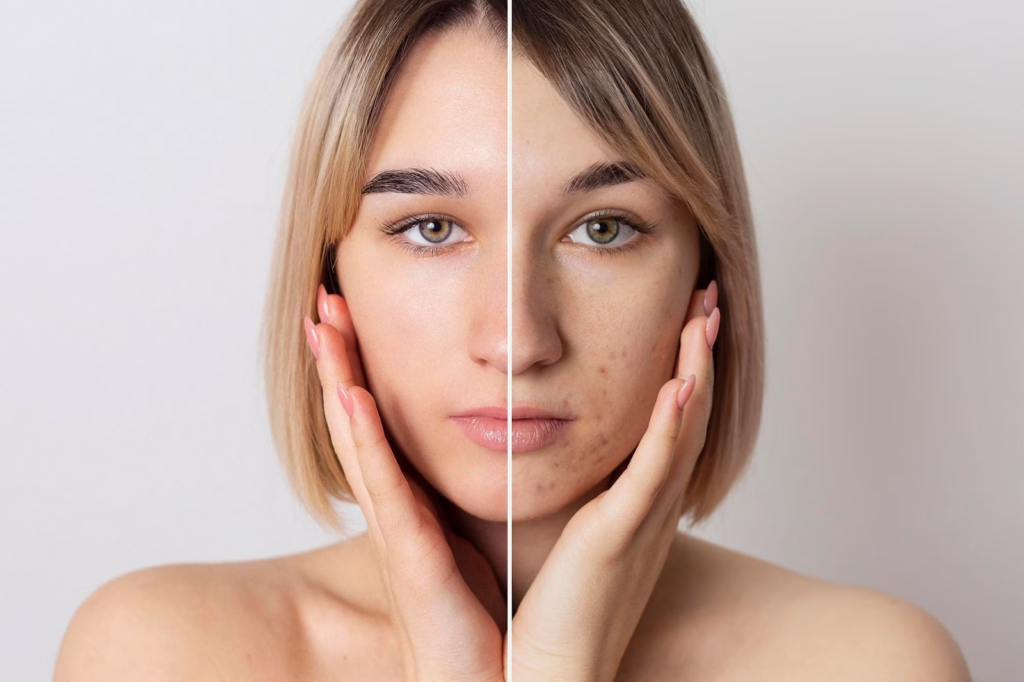Removing Acne Scars: Here’s What You Need to Know
Dealing with the pimples and blemishes in acne is just half of the battle. Acne scarring is a distressing reminder of the struggle with our skin. After you take care of pesky problems, you wonder if their acne scars can ever be removed. But even though it may feel like it’s there forever, there is hope for eliminating these scars – if you know what to do.
Well, acne scars can indeed be removed! We’ll explore ways to reduce or remove acne scars and reclaim your clear complexion at Sozo Clinic. We’ll deeply dive into everything you need to know about removing acne scars effectively.
How Does Acne Cause Scars?

Acne scars are the result of inflammation within the dermis caused by acne. Follicle wall breakdown causes an inflammatory response leading to papules, pustules, nodules, or cysts. The resulting scar is usually some discolouration, indention, or raised area caused by the healing process.
What Acne Scars Are & Why Do They Happen?
Acne scars result from deep or severe acne breakouts, which heal and leave behind permanent marks. These marks can range from shallow indentations to raised bumps and discolouration. It occurs when acne is not treated correctly, allowing it to become severe and inflamed. It can also happen when pimples are picked or squeezed, further damaging the skin. Properly treat breakouts immediately using topical treatments and see a dermatologist if needed.
Why Can Acne Scars Be Difficult to Treat?
Acne scars are caused by permanent damage to the skin and underlying tissue. It is in the presence of pimples, blackheads, whiteheads, and cysts, and acne grading assesses its severity. The type, number and size of lesions determine it—acne ranges from mild (grade 1) to severe (grade 4).
Grade 1 (mild): Papules, whiteheads, and blackheads are present.
Grade 2 (moderate): An increase in papules and pustules is present. Lesions may be inflamed.
Grade 3 (severe): Many papules, pustules, nodules, and cysts are present. The lesions are inflamed.
Grade 4 (very severe): Many papules, pustules, nodules, and cysts are present. It is painful, and scarring is likely to occur.
Not All Acne Scars Are Permanent!
Though acne scarring can be difficult to treat, not all scars are permanent. Right treatments can reduce the appearance of acne scars and achieve healthy, smooth skin. However, various factors affect acne scar removal, including scarring type, skin response, and the acne treatment used.
The type of scarring plays a role in determining successful acne scar removal. As acne scars range from shallow depressions to deep pits and ice-pick scars, each requires different treatments for optimal results. Your skin’s response to treatment is another factor, as some may experience difficulty in healing or have an adverse reaction to treatments, which makes scarring worse instead of better.
The type of treatment used significantly impacts how successful the procedure is. Discuss your options with your doctor for what suits your individual needs.
Laser resurfacing
Laser resurfacing uses a high-energy beam of light that stimulates collagen production and improves skin tone.
Chemical peeling
Chemical peels remove the outermost layers of skin, allowing fresh cells to grow in the area to reduce scarring.
Microneedling
Microneedling uses a roller device with tiny needles to create tiny punctures in the skin that stimulates collagen production and helps reduce the appearance of acne scars.
Subcision
Subcision uses a needle to cut the scar tissue under the skin and release the attachment of the scar to raise it back and level with the surrounding skin.
Fillers
Fillers are injected into the skin to fill deep acne scars, add volume, and make them less noticeable.
Dermabrasion
Dermabrasion uses a rotating wheel to remove the outer layer of skin and allow for fresh, healthy cells to grow in their place. The new skin is smoother and less likely to show acne scarring.
Punch excision
Punch excision removes the scar with a small punch tool and stitches it back together to reduce its appearance.
Steroid injection
Steroid injections reduce the size of raised scars and help flatten them.
Surgical removal
Surgical removal cuts away and removes the scar tissue that even out skin tone.
Cryotherapy
Cryotherapy uses liquid nitrogen to freeze and removes scar tissue. It causes little to no damage to the surrounding skin.
Topical medication
Topical medications like retinoids, antibiotics, and corticosteroid creams reduce inflammation and heal and fade scars.
Consult a Dermatologist
No matter what type of acne scarring, consult a dermatologist who can recommend treatments tailored to your skin and individual needs to achieve healthy, smooth skin!
Final Thoughts: Can acne scars be removed?

Yes, acne scars can be removed or reduced in appearance with various treatments depending on the type of scarring and your individual needs. With the right treatments, it is possible to make acne scars less visible and improve the overall look of your skin.
Passionate Writer, Blogger and Amazon Affiliate Expert since 2014.




























